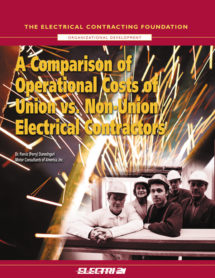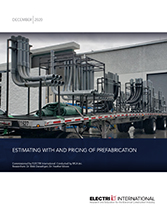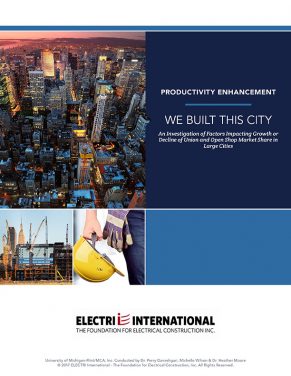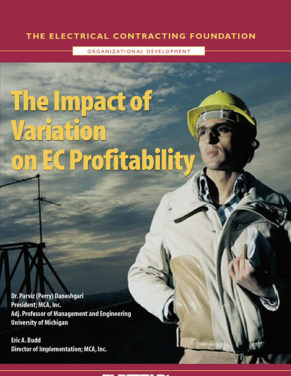A Comparison of Operational Costs of Union vs. Non-Union Electrical Contractors
This study was commissioned to investigate the main differences between unionized electrical contractors (ECs) and open-shop contractors, as well as to identify the main cost drivers and how they differ between the two. Throughout this study, we determine the impact of various cost drivers on union contractors.
Their impacts on cost can be ranked as:
- Operational model
- Labor management and cost
- Labor hiring, training and loyalty
- Procurement
- Office support
- Crew ratio
- Application of prefabrication
- Composite crew mix
The research was conclusive about the importance and impacts of these cost drivers. Contrary to common perception, the main difference between the two styles of operations is not the labor cost, but, rather how the labor is managed. The cost of labor and its uncertainty is driven primarily by management practices. We believe that these differences have had major impacts on unionized electrical contractors’ market share. Market share has been one of the main measurements for businesses since the early twentieth century. Share of the market by itself, however, does not justify any concern or lack of it for the health and wealth of an industry or organization. Profitability, productivity and market share need to be evaluated simultaneously in order to gauge the success of any operation or organization.
Current measurements of the market share of the signatory contractors, and therefore of the IBEW, show a 30-year decline. (NECA maintains its market share data on a per-person basis. IBEW market share is calculated by dividing the number of IBEW electricians by the total number of electricians.) According to NECA’s measurement, the market share has dropped from 48 percent in 1982 to 31 percent in 2000 (15). The market share drop and reduced profitability, as well as market expansion of open-shop electrical contractors, have troubled unionized industry leaders.
This study determined that the convoluted expectations and regulations of the labor union add cost to the stakeholders without providing any added value to them. On the other hand, open-shop contractors enjoy a higher level of freedom that results in lower cost.
The conclusion of our research is both provocative and essential for the future growth of union electrical contractors. To secure you business’ future by expanding your productivity, profitability and, therefore, your market share, please read on.















